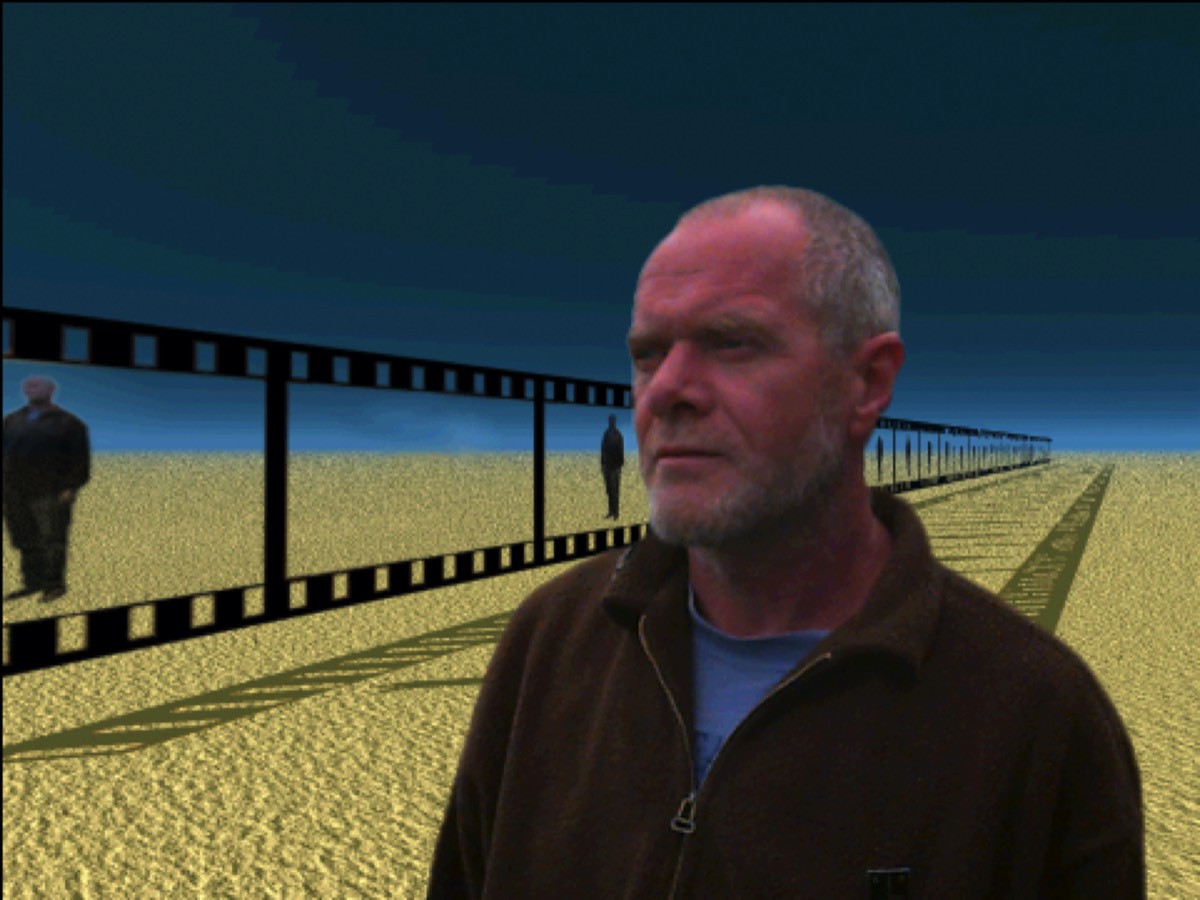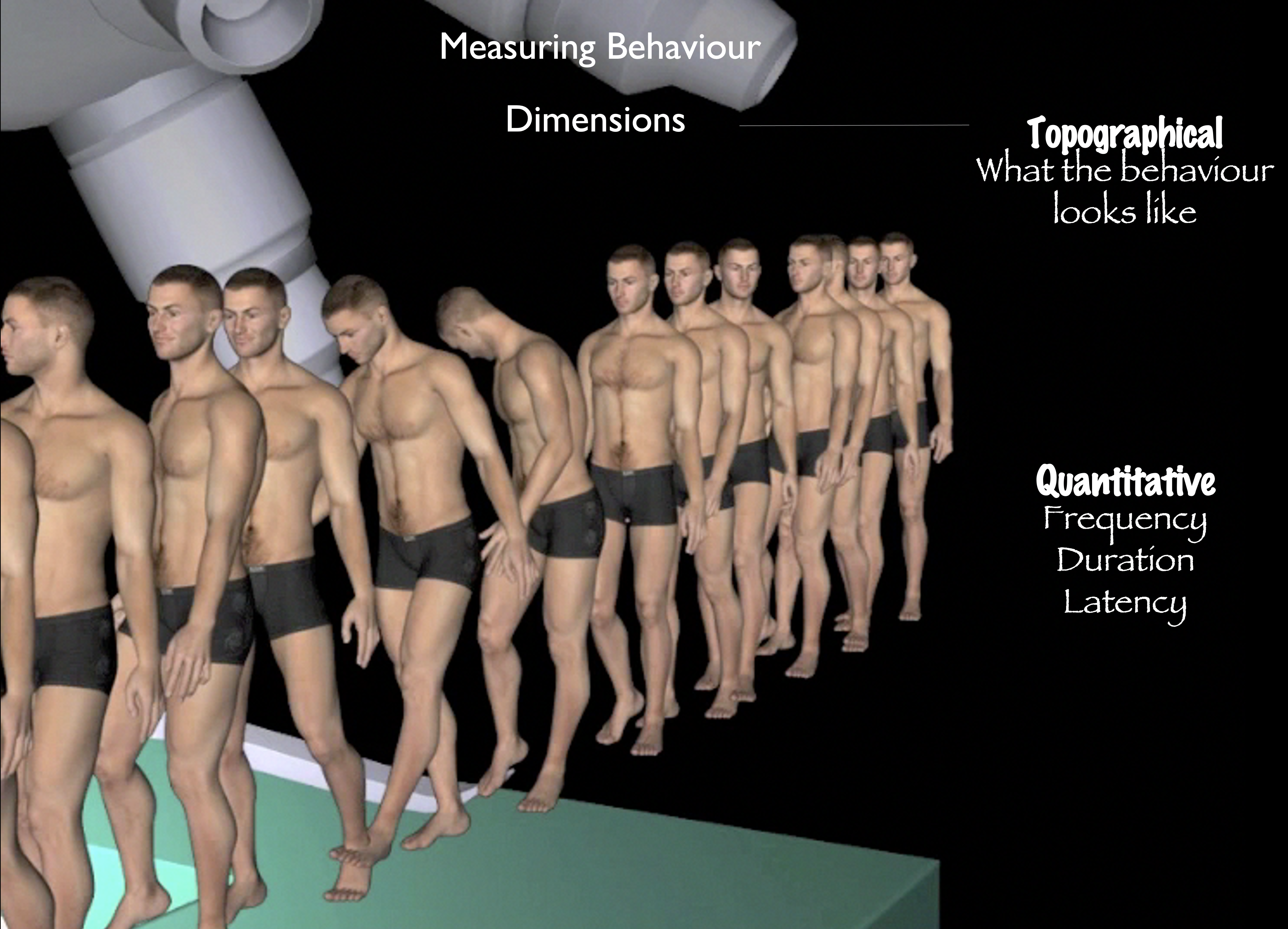
2. The Behavioural Stream
Within the history of the natural sciences the microscope is revered for allowing us to see familiar things differently. When organisms were studied, observations made at many different levels of magnification uncovered new structures and new processes associated with each structure. In short, the microscope provided insights into the collective action of the various components that are involved in the functioning of a whole organism. These findings spurred the development of statements about how things work, what are called Laws of Nature.
The scientific analysis of behaviour has also benefited from the use of special observational techniques. Movie 2.1 shows that everything involved in being a person is open to inspection by a science, and accordingly all that is observed is properly categorised as data. This is an obvious conclusion to be derived from the image, but take your time with it for it has major implications.
Importantly for this tutorial, we will explore explanations for behaviour that have been developed from the perspective of the observer on the left of the image. When you reflect on the image, bear in mind that all of your thoughts and feelings, in fact all that you would define as you, as you walk underneath the microscope, is regarded as data from this perspective. This is a challenging perspective for it confronts many cherished assumptions about why we do the things we do. Even the conclusions of scientists can be confronted, an issue discussed throughout, and in depth in the chapter on ‘private events’.
The story of a science of behaviour is complicated because the word ‘behaviour’ itself is a loaded term. That is to say, it comes with some baggage and this needs to be unpacked so that it doesn’t interfere with your understanding of a science of behaviour. We will discuss this issue in more detail later. For now, let’s examine a fundamental aspect of behaviour that will help lay the foundations for this discussion.
We will start with the simple arbitrary behaviour shown in Movie 2.2.
Observations of any behaviour are observations of changes in an organism as it streams across time and space and this has implications for how one should proceed in subsequent analyses. Movie 2.3 represents this process of streaming in what is called the Behavioural Stream.
There are implications for measurement, a key aspect of any science, that arise from this image. These implications are more easily explained with the help of the refined image of the behavioural stream shown in Movie 2.4. Here we see snapshots in time. When you track behaviour like this, you are in fact using a measurement system.
Viewed like, it is easy to see how a measurement system can be developed for now you can count the frequency of any behaviour and you can measure the duration of any behaviour. Such a measurement system retains its focus on the nature of the phenomenon being studied, i.e., changes in behaviour across time. And don’t forget that the word behaviour, as used here, is very different to the shallow definition used in everyday language. More on this later.
All science involves the measurement of events and when you track changes in the behavioural stream you are in fact measuring behaviour. Figure 2.1 shows examples of events called dimensions of behaviour that comprise the behavioural stream. These will be discussed in more detail later. For now, it is sufficient to note that when scientists segment events in time they do so because it is easier to measure aspects of how the stream is changing. In so doing, they are not imposing an abstract conceptual framework on how behaviour should be analysed. Instead, they are preserving the nature of the phenomenon under consideration and adapting their investigative strategies accordingly. This approach is of central importance to understanding the differences between the science of behaviour analysis and the discipline of psychology as a whole.

One of the key messages to remember from this chapter is that although behaviour is a process that never stops during the life of an individual, this does not mean that we cannot study it. Movie 2.5 illustrates this flow of behaviour.